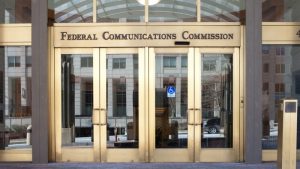The Navy Postgraduate School (NPS) has entered into a Cooperative Research and Development Agreement (CRADA) with Microsoft to look to integrate and utilize emerging technologies in service of the warfighter and national security, Navy announced May 2.
As government agencies shift away from their remote-only work environment brought upon by the pandemic, state and local leaders discover the benefits of more flexible work schedules or locations led by service delivery.
A recent nationwide survey of higher education students found that a plurality of students prefer online asynchronous classes over other learning options, helping illuminate the changes the COVID-19 pandemic has brought to learning.
The Virginia School Board Association and wireless service provider Kajeet on May 10 announced 2022 Virginia Education Broadband Grant awards totaling $270,000 to nine Virginia school districts. Each winning school district was awarded $30,000, which can be used to implement a combination of “Kajeet Education Broadband solutions, including Wi-Fi hotspots, school bus Wi-Fi, LTE-embedded Chromebooks, […]
California Governor Gavin Newsom signed an executive order on May 4 that aims to make the state more friendly to the use of blockchain technology.
Federal CIO Clare Martorana said today that good customer experience (CX) in government starts with “meeting people where they are,” and doing so equitably in order to build back trust in government.
The White House said today it has lined up 20 service providers that will offer high-speed broadband service within the price points set forth in the government’s Affordable Connectivity Program (ACP), and also went live with a Federal website that people can use to find the services.
The Federal Communications Commission said on May 4 it will commit another $39 million of Emergency Connectivity Funding (ECF) to help schools expand broadband access and the purchase of devices for students.
The state of New Jersey is using $10 million in funding from the American Rescue Plan’s State Fiscal Recovery Fund to invest in automated license plate recognition (ALPR) technology, Gov. Phil Murphy announced.
Fort Worth has become the first city government in the United States to mine Bitcoin, embracing cryptocurrencies to become a leading center of technology and innovation.
Recent
-
 Trump Signs Order to Preempt State AI Laws and Push Single Federal Framework
Trump Signs Order to Preempt State AI Laws and Push Single Federal Framework -
 Government, Industry, Academia Collaboration Fuels AI Progress
Government, Industry, Academia Collaboration Fuels AI Progress -
 Indiana DOE Partnership Targets STEM, Digital Learning Tools
Indiana DOE Partnership Targets STEM, Digital Learning Tools -
 States, Schools Harness Data and Workforce Programs to Combat Fraud, Cyber Threats, and Service Outages
States, Schools Harness Data and Workforce Programs to Combat Fraud, Cyber Threats, and Service Outages









